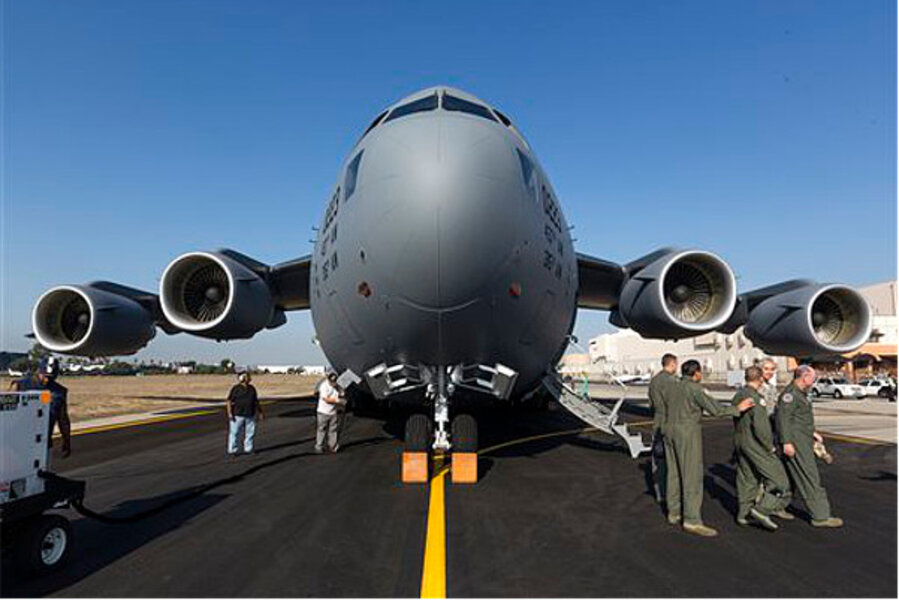Boeing C-17: Boeing delivers last C-17 to Air Force
| LOS ANGELES
The Boeing Co. has delivered the final C-17 produced for the US Air Force, more than two decades after the mammoth and versatile transport plane was rolled out as the Cold War wound down.
Military officials took delivery of the C-17 Globemaster III — the 223rd sold to the Air Force — during a ceremony Thursday attended by hundreds of workers at Boeing's Long Beach, Calif., assembly plant.
"It was a long run with the US military, and it was a good run," said engineer Bob Grech, who joined the project 19 years ago.
The massive, four-engine C-17 made its first flight in 1991, and military deliveries began about two years later. The plane is used to airlift tanks, supplies and troops as well as perform medical evacuations. It quickly became a war and disaster workhorse, prized for its ability to operate from basic airstrips and cover intercontinental distances with a full load without refueling.
With a payload of 160,000 pounds, it is designed to airdrop 102 paratroopers and their equipment.
After the ceremony, the Air Force's final C-17 took off, en route to Charleston Air Force Base, S.C. — recreating the same flight the first production model took when it was delivered in July 1993. As the crowd on the ground cheered, the giant aircraft looped around and performed a low flyover before heading into the clouds.
Rachid Ali, a Boeing avionics inspector who has worked with C-17s for a dozen years, recounted the plane's service in Bosnia and Afghanistan. C-17s outfitted as mobile hospitals were regularly used to evacuate wounded military personnel during the Iraq War.
"It's an awesome airplane. Capability, reliability, it's above and beyond," Ali said. "The first 50 are still flying. After 25 years, you can refurbish them and they're as good as new. It's going to be in the air for years to come."
Design work on the plane began at the million-plus square-foot Long Beach facility in 1981, when it was a McDonnell Douglas facility. Boeing merged with McDonnell Douglas in the 1990s. At least 250 have been built, at a cost of about $311 million each when research, development and construction costs are included.
The Long Beach assembly line, which employees nearly 4,000 workers, still has pending orders in the foreign market. Boeing's overseas customers include the United Kingdom, Canada, India, Australia, Qatar, United Arab Emirates, and NATO.





